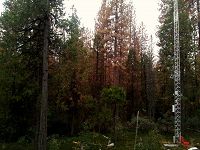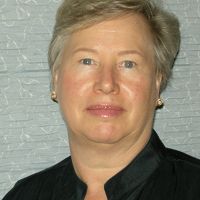SSCZO researchers featured in Tulare Basin Wildlife Partners “One Watershed” series
15 Oct 2015
News Source: Tulare Basin Wildlife Partners
SSCZO's Mohammad Safeeq, Carolyn Hunsaker, and Roger Bales discuss forest health, sustainable management, and impacts on water in a changing climate.
SSCZO researchers Mohammad Safeeq, Carolyn Hunsaker, and Roger Bales discuss forest health, sustainable management, and its impacts on water in a changing climate as part of the Tulare Basin Wildlife Partners' One Watershed series. Here are some highlights from the sixth article in the series, Watershed Connections: Forest Health and Its Impacts Downstream.
Shifting the Forest Management Paradigm
More than half of the Forest Service’s annual budget is spent on firefighting. Twenty years ago, firefighting accounted for 16% of the budget. Within ten years, that figure is expected to climb to two-thirds of the budget.
“We have to move from fire suppression and containment to fire prevention through forest management,” said Mohammad Safeeq, Research Scientist at UC Merced’s Sierra Nevada Research Institute. “We [at SNRI] are invested in … demonstrating the measurable benefits of prescribed forest burns and tree thinning on fire risk, carbon storage, and water yield.”
Ongoing Research with SSCZO Partner Kings River Experimental Watershed Group
For the past 13 years, the Kings River Experimental Watersheds (KREW) study has been monitoring watershed variables. The goal is to make data available to guide managers in decisions that help the forest provide the ecosystem services upon which humans and wildlife depend. In 2012 and 2013, the KREW team implemented tree thinning and prescribed fire as a means of restoring forest health.
“The fact is, if you want to improve forest health and do it in a responsible and effective way, you need data and information,” said Carolyn Hunsaker, Forest Service scientist leading the KREW project. Before KREW, very little was known about headwater streams and watersheds in the southern Sierra Nevada.
Hunsaker said that while they’re still gathering data, observations indicate that forest thinning followed by low-intensity burning shows promise for safely returning the forest to pre-1850 conditions, when the Sierra gold rush and fire suppression strategies began. Early results should be available in 2016.
Sustainable Forest Management for Water Security
“What [forest thinning and prescribed burns] should do, if all goes well, is increase water quantity,” said Hunsaker. By reducing the number of plants and trees, forest managers expect to reduce the amount of water used by the trees and then transpired into the atmosphere, freeing up more water to travel downstream.
If managers thin about 25-50% of the trees in strategic areas, you can increase water flow into streams by 9-16%, according to Roger Bales, engineering professor at the University of Merced and Director of the Sierra Nevada Research Institute. Computer model estimates suggest a possible water yield increase of 500,000 to 1 million acre feet a year across the Sierra, enough for up to five million people, according to Bales.
The KREW study also aims to demonstrate how carefully planned and implemented forest management can affect water quality. “It should help avoid massive wildfires that cause erosion and sediment issues impacting streams, reservoirs, fish, and other aquatic species,” said Hunsaker.
“The combination of high fuel loads and increasing temperatures due to climate warming may well be bringing our forests to a tipping point,” said Bales. “A sustainable forest in a warmer climate may be different from the sustainable forest of 100-150 years ago.”
With warmer temperatures, more precipitation will fall as rain instead of snow and snow will melt earlier in the season, reducing dry season river flow.
“Increase in temperature by one to two degrees makes a big difference and this is something we cannot ignore,” said Safeeq. “Reduced snowpack and long dry summers are going to be the new normal and we have to find ways to adapt.”
News Source:
READ MORE from Tulare Basin Wildlife Partners >>
News Category:
RESEARCH |
EDUCATION/OUTREACH
People Involved
CZO
-
Sierra, INVESTIGATOR
-
Sierra, INVESTIGATOR
-
Sierra, INVESTIGATOR
Explore Further




